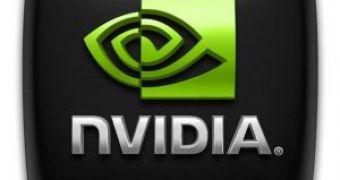Not only analysts but also end-users noticed how uncommon it was for NVIDIA to demonstrate its Fermi architecture months ahead of the actual release date. The current general impression is that the company intended for the preview to serve in slowing down ATI's sales.
Of course, the announcement doesn't seem to have been very successful in this endeavor, with ATI having sold over 800,000 GPUs by mid-December. On the other hand, NVIDIA's subsequent launch delay did not have the expected effect either. Instead of end-users becoming less interested, expectations surrounding the Fermi technology actually grew.
Company representatives seem to still be very optimistic about their technology and expect the Fermi GPUs to top the performance of any other GPU in every way. According to the maker, internal tests indicate quite satisfactory performance capabilities.
“We expect [Fermi] to be the fastest GPU in every single segment. The performance numbers that we have [obtained] internally just [confirm] that. So, we are happy about this and are just finalizing everything on the driver side,” said Luciano Alibrandi, the head of NVIDIA public relations department in EMEAI region, in an interview with the DonanimHaber website.
Currently, the company is supposedly working on “perfect” drivers for the Fermi-based cards. These drivers are meant to enable PCs to make full use of all the GPU's resources, namely the 512 stream processing engines, 384-bit GDDR5 memory controller with ECC and the 768KB unified level-two cache, among other things.
“We just want to make sure it is as perfect as we want it to be in both graphics and computing [performance and quality],” stated Mr. Alibrandi.
According to NVIDIA CEO Jen-Hsun Huang, the GF100 Fermi-based card will only enter mass-production in the first quarter of NVIDIA's 2011 fiscal year (which starts on January 26, 2010 and ends on April 26). Of course, the actual availability will also be influenced by TSMC's 40nm yields.
Considering that AMD's DirectX 11 cards are no longer in such short supply, it can be assumed that the 40nm yields of the Taiwan Semiconductor Manufacturing Company have finally started to grow. This means that initial availability of Fermi-based DirectX 11 NVIDIA cards might be better than that of ATI's HD 5700 and HD 5800 series.

 14 DAY TRIAL //
14 DAY TRIAL //